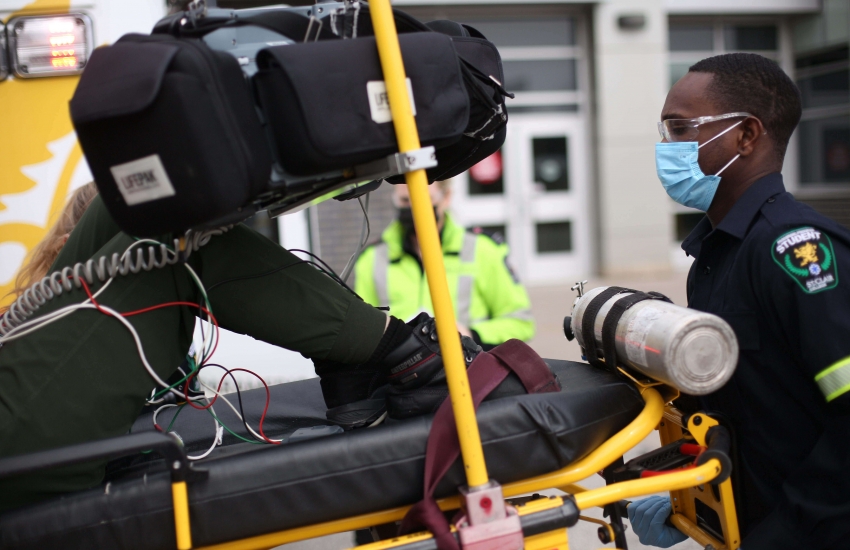Even in a pandemic, coordinators in St. Clair College’s paramedic program are ensuring students get the hands-on training they need.
Qualified and professional paramedics will train students for the next eight weeks through mock scenarios they may encounter ranging from overdoses to fainting seniors.
The program was created to ensure students still received hands-on experience without the risk of contracting COVID-19. Program coordinator John Lassaline worked with his staff to brainstorm how to meet this need.
“It was, ‘Well, if we can’t bring the students to the teachers, maybe we can bring the teachers to the students,’” said Lassaline.
According to him, this is also the only program in Ontario where paramedics are hired to train students over putting them in placements.
As for how the simulations work, students arrive on campus as if they were to conduct a regular paramedic’s shift. They inspect their ambulance to ensure it is clean and functional.
From there, they will receive a call to arrive at a mock simulation where two professional paramedics are located. One paramedic acts as a patient while the other acts as what Lassaline calls “wallpaper." The paramedic in this role shares vital signs of the patient with students.
Students treat the patient for a set period of time before taking them to the Applied Health Sciences building, where they offload them and give a report to a nurse as they would in a hospital. Along the way, they provide a radio dispatch to a mock dispatcher. Lastly, the ambulances are cleaned and readied for the next call.
The simulations play a role in the student’s marks, with their performance being graded according to the Global Paramedic Scale for Rating Competence.
Lassaline said features of the Applied Health Sciences building and three fully functional ambulances donated by local emergency services also made this program possible.
Justin Elwgren, a professional paramedic, said his experience is positive.
“There’s great teamwork with everyone here. It’s been good getting these students through their time learning on the job,” said Elwgren.
He added that the students are handling the simulations well, treating them like they were real.
Elwgren also said the work of a paramedic is not easy.
“It’s difficult, never the same every day. It changes from call to call with different environments. You have to be comfortable performing under high-stress situations and being able to talk to people.”
Claudio DiStefano, one of 17 students in training, said he is having a positive experience.
“It’s been awesome. We rotate between groups so we get to communicate with a wide range of paramedics, they’re all really awesome and they give us great feedback,” said DiStefano.
DiStefano also said he likes the paramedic program overall as it offers an opportunity to explore his passion for medicine.
Despite the loss of traditional placements due to COVID-19, it appears these simulations guarantee the next class of paramedics can develop the skills they need to succeed.
- Tyler Clapp
